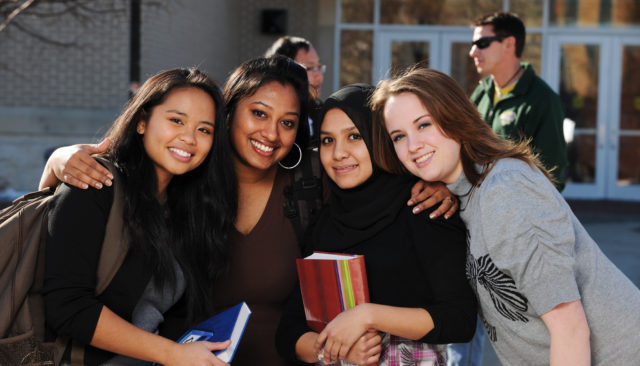Heading Back to School Safely: September is National Campus Safety Awareness Month
September 1, 2016
By: Colleen O’Gorman, Summer 2016 Intern at NNEDV
Colleen O’Gorman, currently a senior at Princeton University, interned at the National Network to End Domestic Violence (NNEDV) in the summer of 2016 with our Public Policy team. Colleen is extensively involved in campus activism, serving as the president of Princeton’s Sexual Harassment/Assault Advising, Resources, and Education Peer Program. During National Campus Safety Month, we asked the expert to share her insights about campus safety.
As we take time to reflect during National Campus Safety Month this September, I am reminded of an important lesson that was reinforced throughout my time as an intern at NNEDV this summer. Namely, violence does not occur in isolated incidents: insidious forces of oppression normalize and perpetuate abuse. Working with the Public Policy team, I saw first-hand how fighting sexism, racism, and economic injustice more broadly is crucial to addressing domestic violence.
While knowledge of the root of a problem can be empowering, it can often feel like an insurmountable challenge. How can I, as a young adult, even make a dent in systems that have been around for so much longer than I have?

I am lucky to struggle with this question within a strong, thoughtful community of activists at Princeton University. As the president of the Sexual Harassment/Assault Advising, Resources, and Education (SHARE) Peer Program, I am part of a group of student peer educators who facilitate survivors’ access to confidential resources. In addition to addressing the needs of survivors, SHARE Peers strive to empower students to prevent violence before it occurs. Research shows that one of our best tools to prevent violence on college campuses is bystander intervention – the idea that anyone can step in and stop a situation that may escalate into violence. Although there are certainly obstacles to acting as a pro-social bystander, there are strategies to empower us all to take action in the face of a potentially dangerous situation:
- Notice when a situation could lead to violence. It is really easy to disregard a racist joke or sexist comment as harmless. However, we risk tacitly endorsing subtle behaviors that harm others when we do not speak out against them.
- Identify when it is appropriate to intervene. In order to effectively combat interpersonal violence, it is important to understand the forms that violence can take. When we can identify domestic violence, stalking, sexual harassment, dating violence, or sexual assault when we see it, we are more empowered to stop it.
- Recognize personal responsibility for intervention. We must keep in mind that everyone who is in danger of being harmed is someone’s loved one. We have to ask ourselves if we would want someone to intervene on behalf of our loved one.
- Know how to intervene if it is safe to do so. Because every situation is different, it is important to know several intervention strategies. It is also important to find a strategy that suits your personality and keeps you safe. My favorite strategies are the “three D’s”:
- Direct: Confront the harmful behavior so the potential victim is empowered to leave the situation or the perpetrator can make the choice to stop.
- Distract: Create a distraction or redirect the focus of either party to ensure he or she can get out of the situation.
- Delegate: Ask for help from others to take charge of the situation.
- Take action to intervene. After preparing, it is important to step in to help if you see a situation that might escalate into violence if you can do so safely.
Bystander intervention is crucial to addressing interpersonal violence: not only does this strategy actually prevent specific incidents of violence, but it challenges us all to consider our role in a culture that allows violence to occur. Although interpersonal violence on college campuses is an overwhelming problem, there is so much we can do as individuals to address it. This National Campus Safety Month, I challenge my fellow students to take a stand and intervene when they have the opportunity to safely prevent violence.





